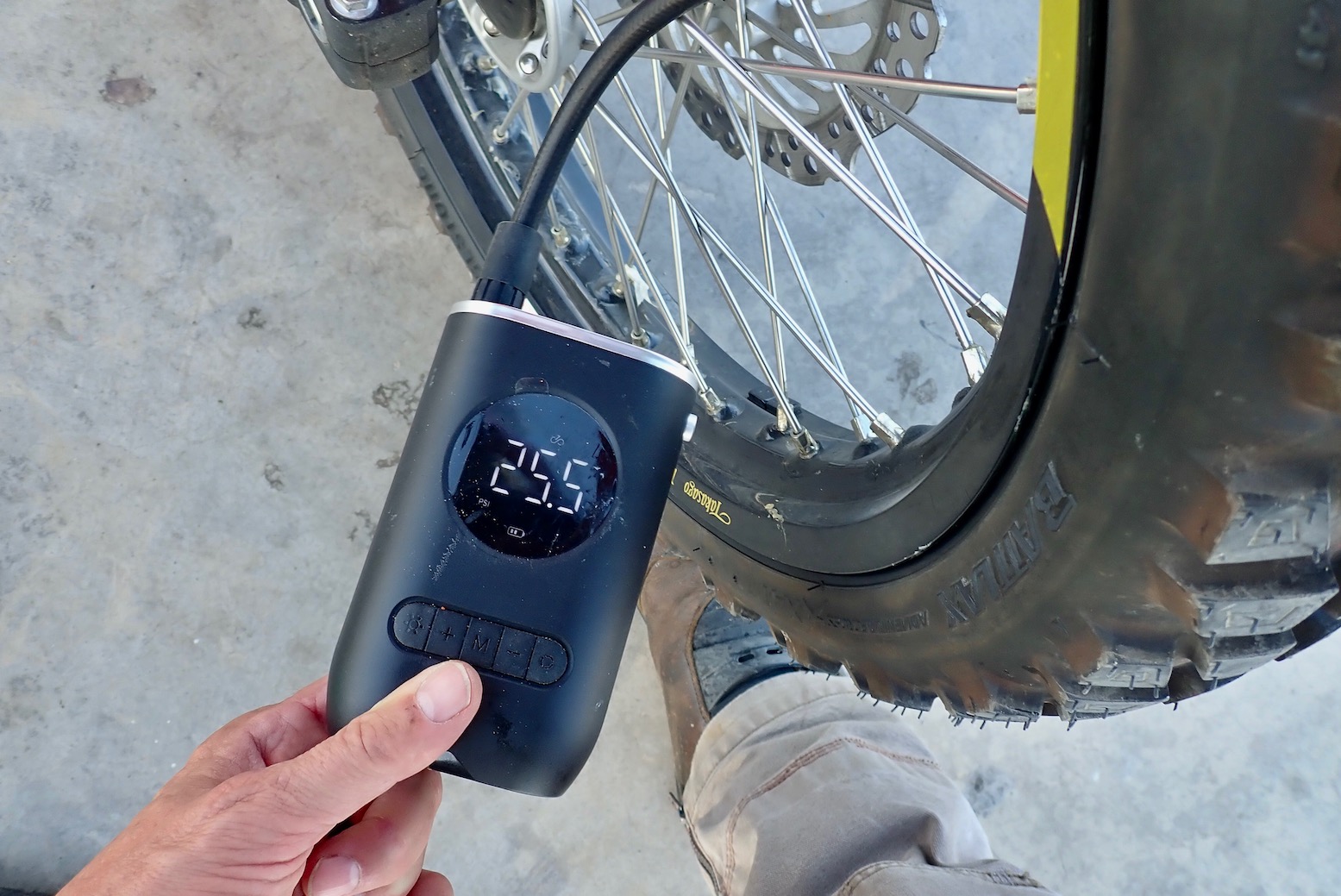
IN A LINE
They work.
WHERE TESTED
About 5000km road and dirt in Morocco/Spain, on a CRF300L with a standard seat wearing Aerostitch AD-1 and AdvSpec Linesman trousers.
COST
£62 from Adventure Bike Shop.

- At the end of the day I am pretty sure they reduced the agony
- Work bike to bike; no need for new seats, pads, etc
- Didn’t feel too sweaty or uncomfortable
- Not too tight. unlike bicycle shorts

- No fly makes a quick slash on a cold day a bit of a grope

What They Say
The Moto-Skiveez® pad for the ADVENTURE style is the most complex of all Moto-Skiveez designs. It is comprised of a base malinga cloth, three different types of foam and a silver ion infused covering. This pad is engineered to provide comfort and functionality for a multitude of riding styles. This pad is designed for the rider to move from seating to standing and shift from forward to rearward on the seat. The padding in the seating area of this design has multiple densities formed with both concave and convex elliptical curves. This feature provides added comfort as the rider moves forward and back.
One of its primary functions is to provide comfort for long hours adventure-touring, testing the abilities of the modern dual sport motorcycle to corner at high lean angles as well as ride off road. Additionally this design features two padded extensions, positioned on the inner thigh of each leg. These extensions have vertical padded ribs with ventilation openings. This is to counteract friction and chafing from repeated standing and seating experienced by aggressive off road riding.

REVIEW
No one was less surprised than me when my CRF300L project bike turned out to be uncomfortable over long miles. It’s been the same on small trail bikes since I started riding them 45 years ago. Their design and perceived use usually demands a narrow saddle on which one can easily stand, but which is half the width of an average adult butt which it supports 99% of the time. My back was crippled for months after my 2017 WR250R trip sat on a similarly narrow saddle.
My 300L started off worse than most as the seat had been lowered which simply meant less padding. Adding an exterior neoprene pad improved things, but raised the seat height which made getting on/off a pain. So I got a stock height saddle which didn’t need padding, but really the solution is a greater surface area on which to park the bum. Loads of other bikes manage to have wider seats with narrowed fronts for standing, but this is what we have on the CRF, short of importing a Seat Concepts saddle at around 400 quid.

Taking Mohamed to the mountain by wearing cycling shorts is a well-known dodge that works OK, but they’re designed to reduce rubbing from rotating legs as well as supporting your weight. I find the foam padding too soft.
Moto Skiveez (US slang for underwear) have been around for years and I finally connected the dots and got myself a pair. The true test was the long, unbroken road ride back to Europe in the spring and they worked there too, but after weeks bashing about in the High Atlas and Saghro, I have to say they do make a difference. I don’t tend to stand up which makes things worse, but I didn’t end the days butt-sore as I’ve done these last few months.




I wore mine under a pair of Aerostitch AD-1 GTX trousers (photo left) and over my underpants (photo on request), neither of which added discomfort or sweatiness (most days started close to freezing and rose up to 20°C). I even detected the breaking-in or softening up period they mention in the first few days. Where possible, it still helped to stand up and relieve the pressure where possible, or just get off the bike for a bit, but the Skiveez could be as good a solution you’ll get to narrow saddle woes.
Later I wore then under Adventure Spec Lineman trousers in warmer conditions. They were OK but why need them at all: I had an idea. Why not integrate Skivee-type pads into the backside of such riding trousers, either permanently or with sleeves into which you slip the pads when needed, like body armour? It would sure make a trackside slash less of a grope while also being one less layer to wear and one less thing to put on each morning.









































